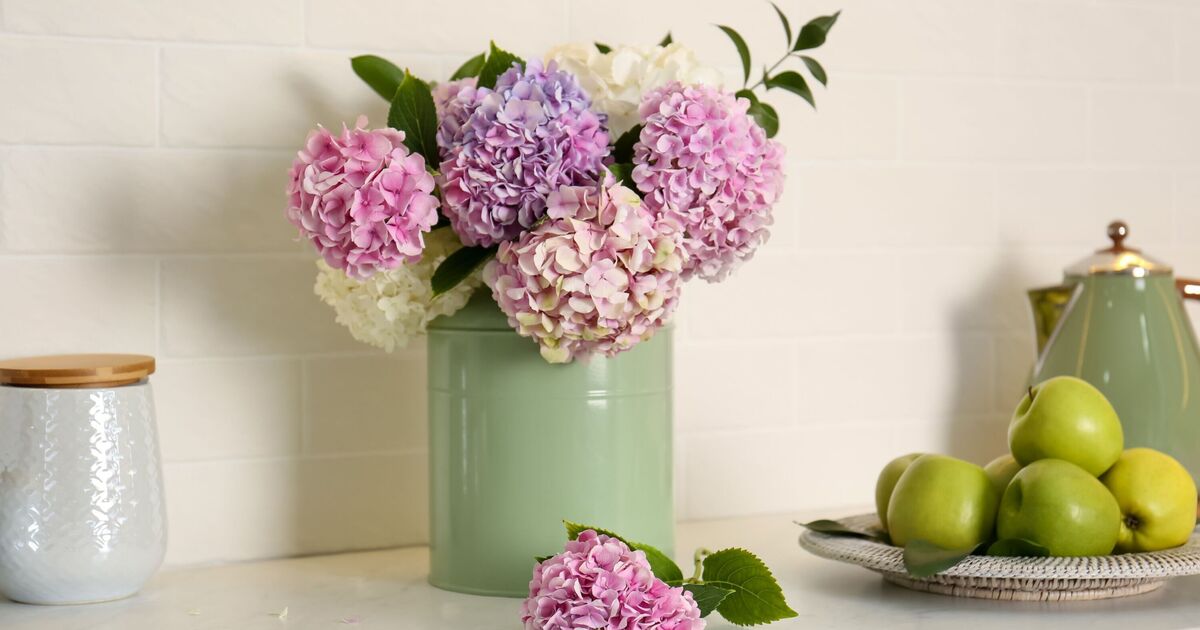A florist has shared some professional advice to rehydrate thirsty and wilting hydrangeas, and you only need two items. Emma from florist Lily & Bee, based in Hampshire, shared her helpful tips with Floristy Markert for getting cut hydrangeas back to full health to keep them lasting for longer.
In a TikTok video from June, Emma praised hydrangeas for their vibrant blooms. She said: “They’re a bit of a hero flower, very popular in weddings, very popular in big displays, and they come in a lot of vibrant colours.” This is how you can revive wilting hydrangeas.
Hydrangeas can become dehydrated for a multitude of reasons, including insufficient watering, excessive heat, dry or windy conditions. While hydrangeas are usually plump and vibrant, some can start to flag.
If this is happening to your blooms, Emma suggested a strategy to rehydrate them.
Emma said: “If that hydrangea was, it was really hot or that hydrangea started to collapse, hydrangeas actually drink through their petals.
“If you’ve got hydrangeas and you’ve done all of those things; you’ve got your clean water, you’ve cut them, you’ve snipped them and they you come down in the morning and they’ve flagged, fill up the sink or a bath or something like that with cold water, a little bit of flower food, completely submerge them for a couple of hours and they will hydrate and pick up again.”
Better Homes & Gardens explained that the flowers could be submerged overnight if need be. However, if they don’t blossom after an overnight bath, the hydrangeas may be beyond saving.
The experts also advised that submerging flowers multiple times to rehydrate them is not recommended. BHG explained: “They’ll usually turn brown and disintegrate when submerged for a second go-around, so this hack only works once.
“Still, if you can rehydrate your hydrangeas when they start wilting the first time, you can enjoy your cut flowers for a little longer.”
There are also a few things you can do to help the flowers get as much water as they need as soon as they’re put into a vase.
Hydrangeas tend to bloom a healthy number of leaves on their stems, but you can take a few off more than you actually need to help the flower conserve energy.
Emma explained that the flower “doesn’t really understand” that its leaves “aren’t important to me”. She said: “They still use a lot of water and energy hydrating those leaves.”
To combat dehydration, Emma suggested cutting the end of the stem at a 45 degree angle, or use a pair of scissors to slice up into the stem.
This will allow the water to be absorbed more easily by the hydrangea, helping the flower to bloom.

